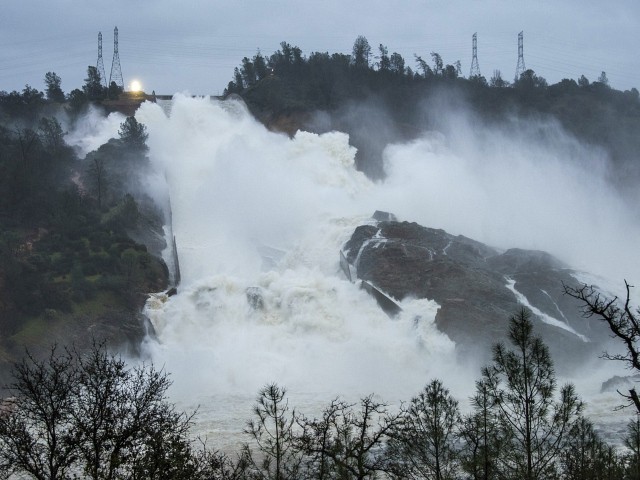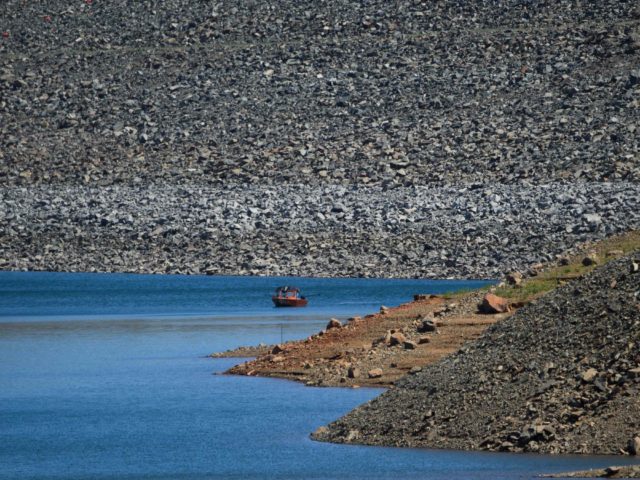Two of California’s dams are at “critically low” levels at a time of year when they are usually full-to-overflowing, signaling that the Golden State is about to enter a brutal phase of a drought that has lasted three years thus far and has no end in sight.
The Los Angeles Times reported Monday:
At a point in the year when California’s water storage should be at its highest, the state’s two largest reservoirs have already dropped to critically low levels — a sobering outlook for the hotter and drier months ahead.
Shasta Lake, which rises more than 1,000 feet above sea level when filled to the brim, is at less than half of where it usually should be in early May — the driest it has been at this time of year since record-keeping first began in 1976. Lake Oroville, the largest reservoir in the State Water Project, a roughly 700-mile lifeline that pumps and ferries water all the way to Southern California, is currently at 55% of total capacity.
In the U.S. Drought Monitor’s latest report, officials described both reservoir conditions as “critically low” going into the summer. Other water officials in recent days have called this “the worst drought in the history of the State Water Project.”
Typically, dams are so full in spring, following winter rainfall and snowmelt, that they have to release water downstream.
The drought is the second in a decade, interrupted only by the very heavy precipitation of the 2017 and 2018 winters. In 2017, as Breitbart News reported, the Oroville Dam was so full that the emergency spillway began to fail, forcing hundreds of thousands of residents to evacuate towns in the valley below. The damage to the main spillway took a year to repair.

OROVILLE, CA – FEBRUARY 17: In this handout provided by the California Department of Water Resources (pixel.water.ca.gov), Water continues to move down the damaged spillway at Oroville Dam with an outflow of 80,000 cubic feet per second (cfs) on on February 17, 2017 in Oroville, California. Last weekend overflow waters from the emergency spillway eroded much of the area below the spillway. The California Department of Water Resources continues to examine and repair the erosion with more than 125 construction crews working around the clock, and placing 1,200 tons of material on the spillway per hour using helicopters and heavy construction equipment at the Butte County site. (Photo by Brian Baer/ California Department of Water Resources via Getty Images)
Last year, water levels at Oroville were so low that the dam’s hydroelectric plant was forced to stop working for the first time.
California residents are facing the prospect of mandatory water restrictions this year, with vigorous monitoring of water use.
Joel B. Pollak is Senior Editor-at-Large at Breitbart News and the host of Breitbart News Sunday on Sirius XM Patriot on Sunday evenings from 7 p.m. to 10 p.m. ET (4 p.m. to 7 p.m. PT). He is the author of the recent e-book, Neither Free nor Fair: The 2020 U.S. Presidential Election. His recent book, RED NOVEMBER, tells the story of the 2020 Democratic presidential primary from a conservative perspective. He is a winner of the 2018 Robert Novak Journalism Alumni Fellowship. Follow him on Twitter at @joelpollak.

COMMENTS
Please let us know if you're having issues with commenting.